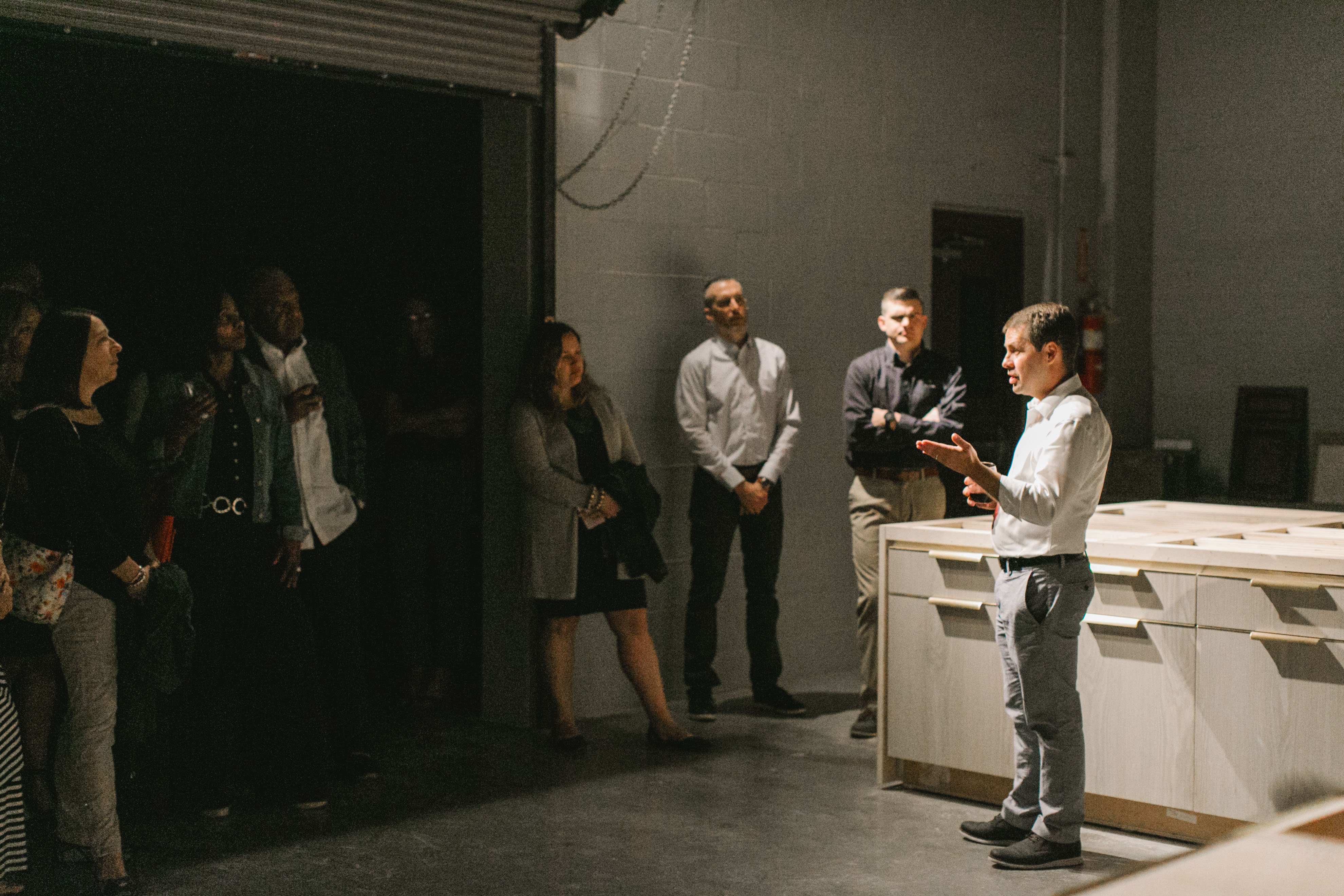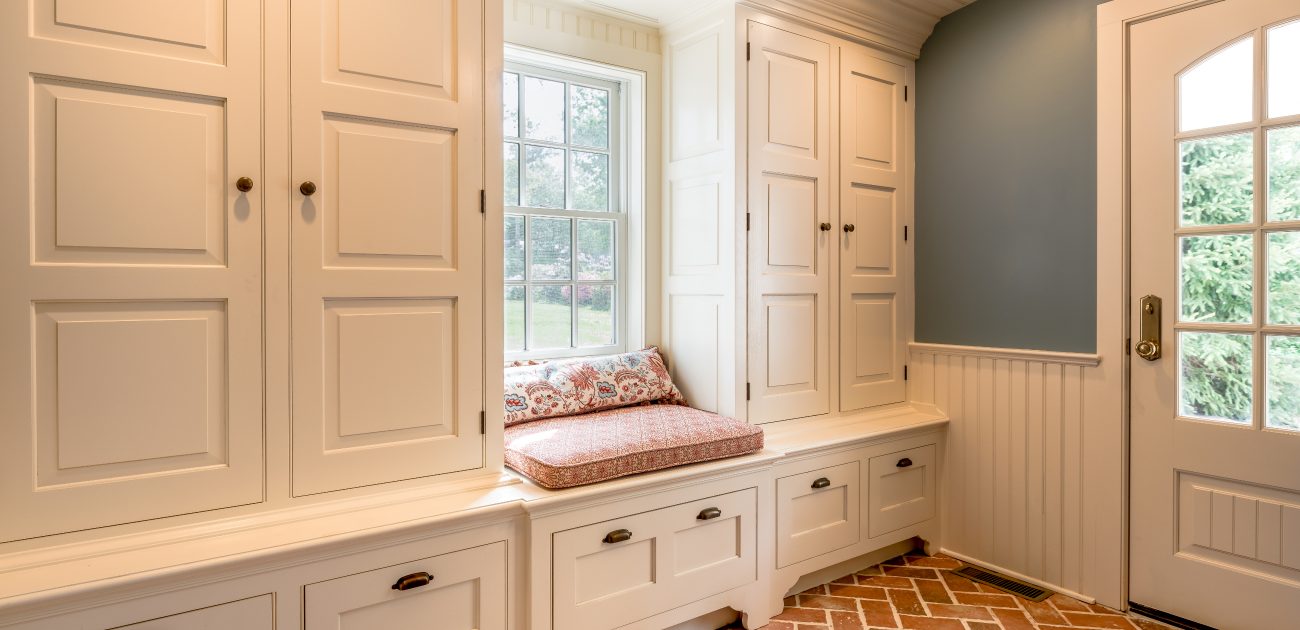I love being involved at the very beginning of a project, especially at the point when the problems and ideas are being shared with the architect. Usually it starts in a negative way:
“We can’t host a large family gathering…”
“The house leaks…”
“The kids are rapidly outgrowing their spaces…”
“Our ‘stuff’ is overflowing and unorganizable…”
And my favorite:
“There is a nasty science experiment growing in our 40 year old shower…”
I first looked at Bill and Betsy MacCauley’s project on a chilly, January morning with Mark Myers, an architect that I have been partnering with for almost 20 years. Bill had called me to talk about a stone wall that had been leaking for the 10 years they lived in the home and that he was thinking while we work on the wall maybe we should consider a family room addition to their first floor.
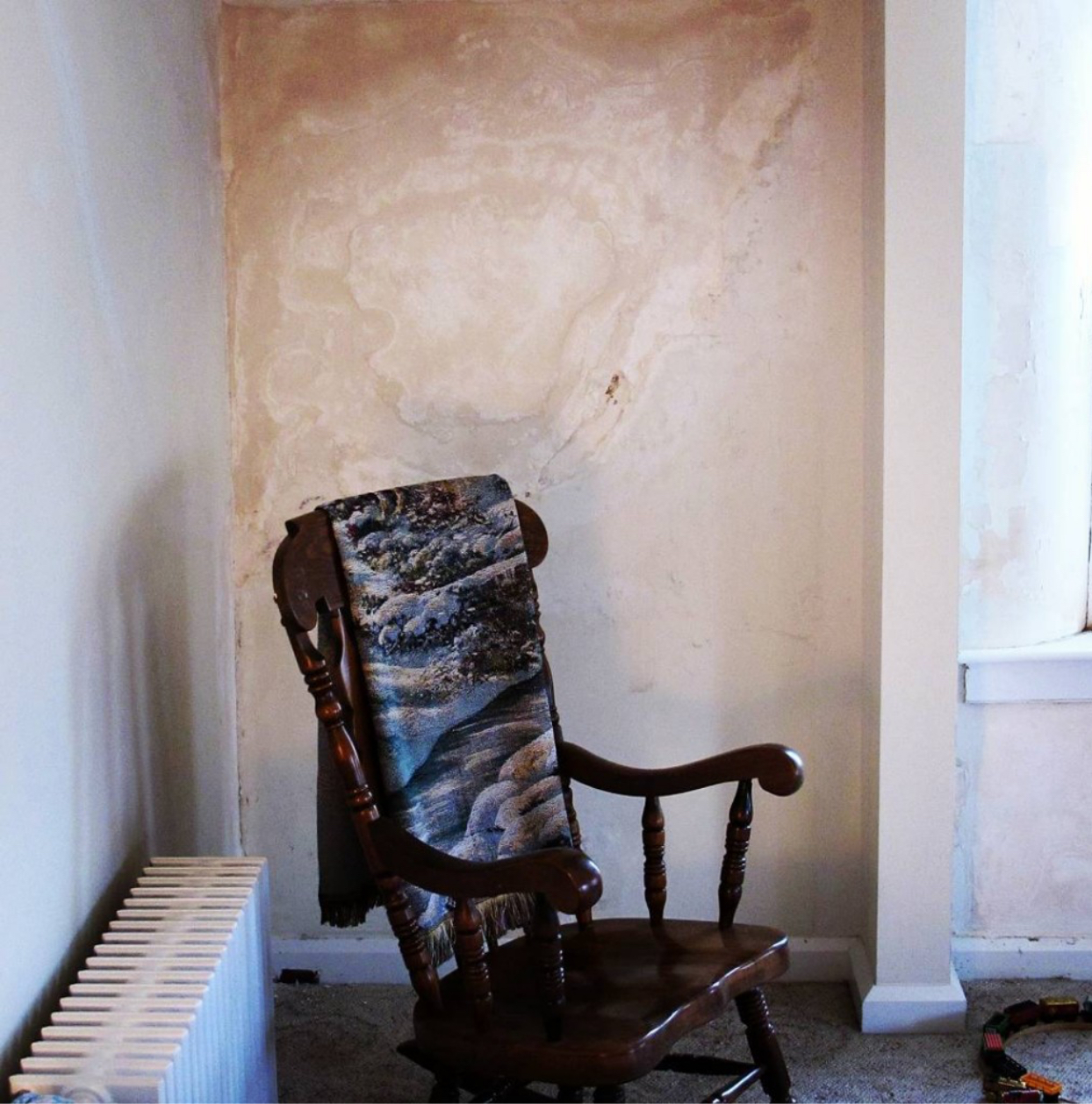
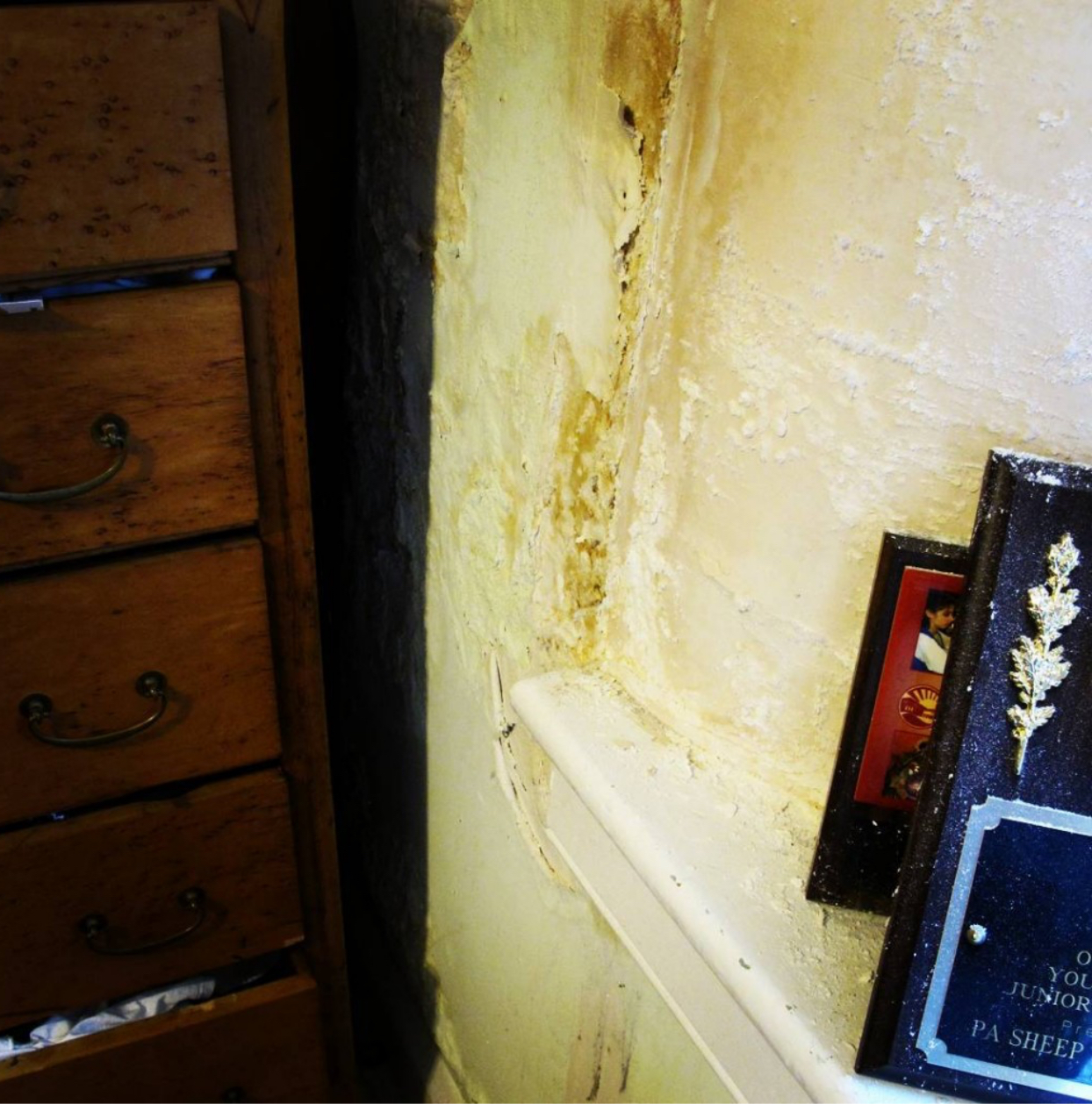
Bill and Betsy’s home was beautiful, however its 200 year old footprint lacked a common space for entertaining a large Christmas dinner gathering or hosting overnight guests. What was a functional farmhouse didn’t come close to meeting 21st century living expectations. In addition to layout problems, the exterior stone wall leaked reliably every time it rained, which lead to some interesting growth on the plaster walls.
I have been fortunate to work with talented architects and I admire their ability to see around the corner and find the client’s dream inside of or beyond the existing walls of the home. I enjoy seeing Mark go to work on beautiful solutions to the home’s shortcomings. Our specialty at Rittenhouse is the practical implementation of that vision and to notice problems before and during construction that may have bugged the client and offer practical solutions.
Early on, I noticed that no one would spend time in the MacCauley basement unless they really had to. Damp and dark with low ceilings overhead made this space a place you only went to if you had to reset an electrical breaker or show a repairman where the furnace was located.
On a ship, the engine room is the heart of all functionality: it keeps the vessel afloat and working properly. In a home, the same concept can be said for a basement. The MacCauley’s did not have the finest engine room, as you can see in the following photos…
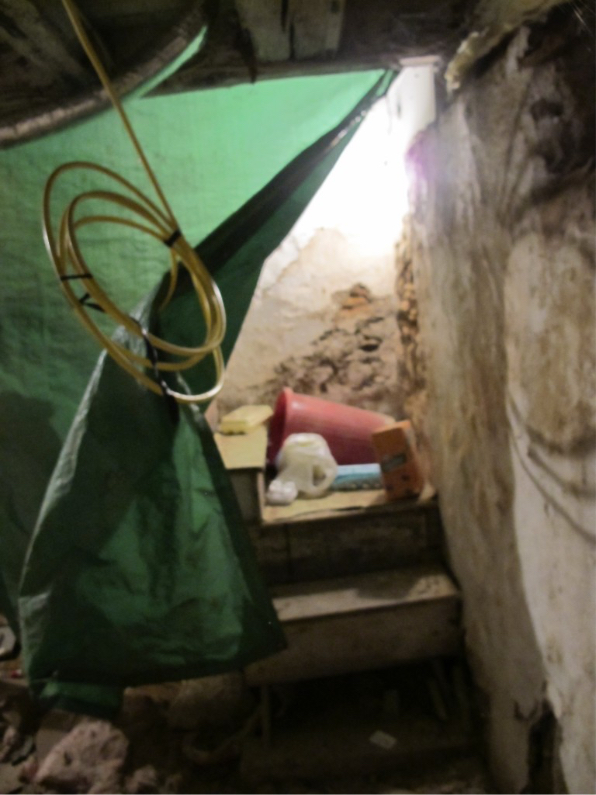
A green tarp was draped across the bottom of the steps to the basement in an attempt to keep the dirt and dust from entering the 1st floor of the home.
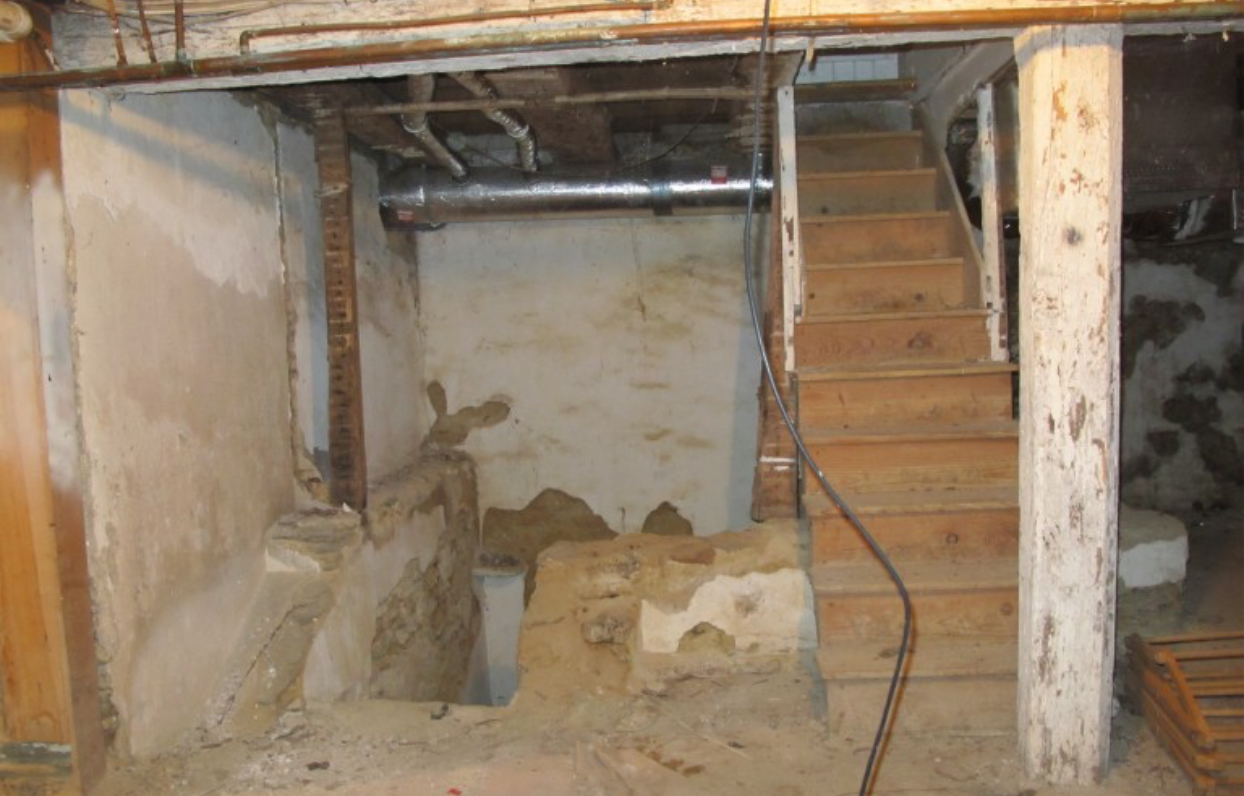
An interesting feature of the basement was a 4’ deep root cellar located in a corner of the basement. Marks on the wall and ceiling showed that it had once been an enclosed storage space.
That’s a shame for a couple reasons: the basement is a part of your home. You should be able to check on the “engine room” without fear of clouds of dust, creepy crawlies or critters. The enemy of any home, new or old, is moisture, and a humid basement doesn’t do your home any favors. Moisture accelerates the rot in wood timbers and HVAC equipment rusts faster. It can also create a breeding ground for things in the duct work….not a pretty sight. Mark solved the big issues of the MacCauley home with creative solutions. For instance, he fit a 20’ x 28’ living room into a 20’ x 20’ addition (you will have to email me for the secret).
While Mark tackled those problems, Gary Mohler, this site’s supervisor, and I paid attention to the problems in the basement. I asked Bill if he was interested in creating a cleaner, brighter, basement space — not making any promises about using it as a living space — and he gave us the green light to tackle the project. Humid basements are breeding grounds for detrimental things. In a 200 year old basement, one of the things you are fighting is the moisture from the earth coming directly through the stone foundation walls. As you can see in the photo, what plaster was on the wall was falling off and the mortar between the stones had turned to powder. There was no resistance to water or moisture entering the basement.
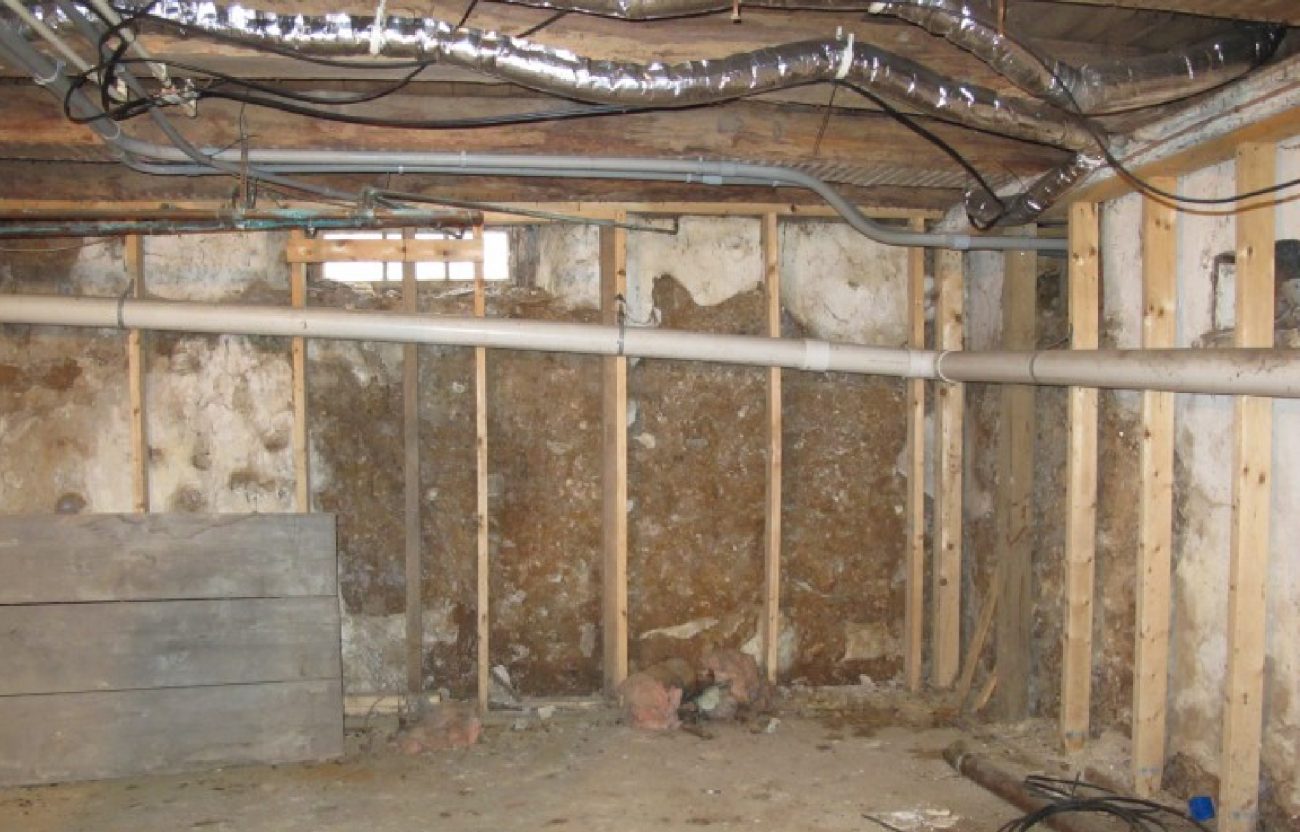
The same problem existed on the floor. Some of the floor was dirt, and the parts of the floor that had concrete were just as damp as the areas which had none. 2” of broken concrete poured directly on top of the soil simply radiated the moisture directly into the basement. We looked at these two problem areas and went to work.
In modern basements, we place a 4” layer of stone on top of the subsoil prior to pouring the concrete; this creates a void between the earth and the underside of the concrete to minimize moisture infiltration. It is also a place for any water that infiltrates the walls to have a reservoir to collect in prior to residing back into the earth. However, this basement had low ceiling and it was clear that we were going to have to dig it a little deeper to accommodate this method. So our framers broke up existing concrete and densely packed soil with picks and shovels.
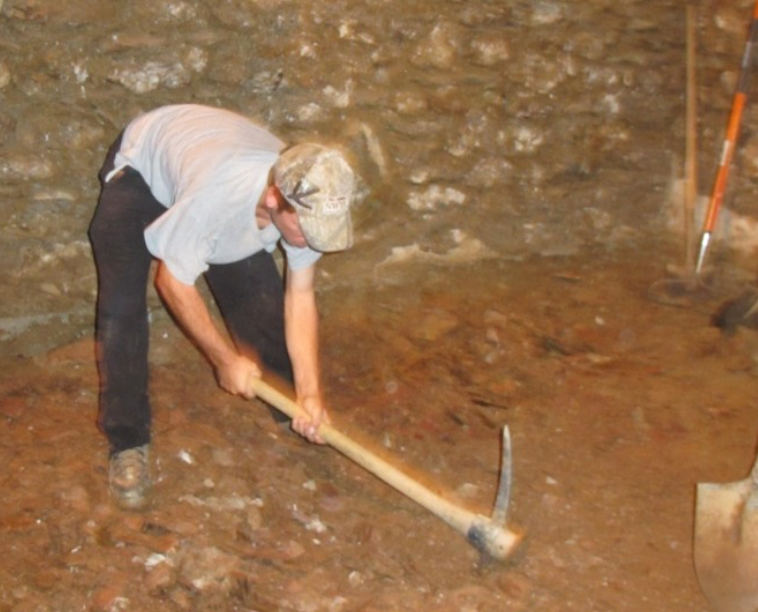
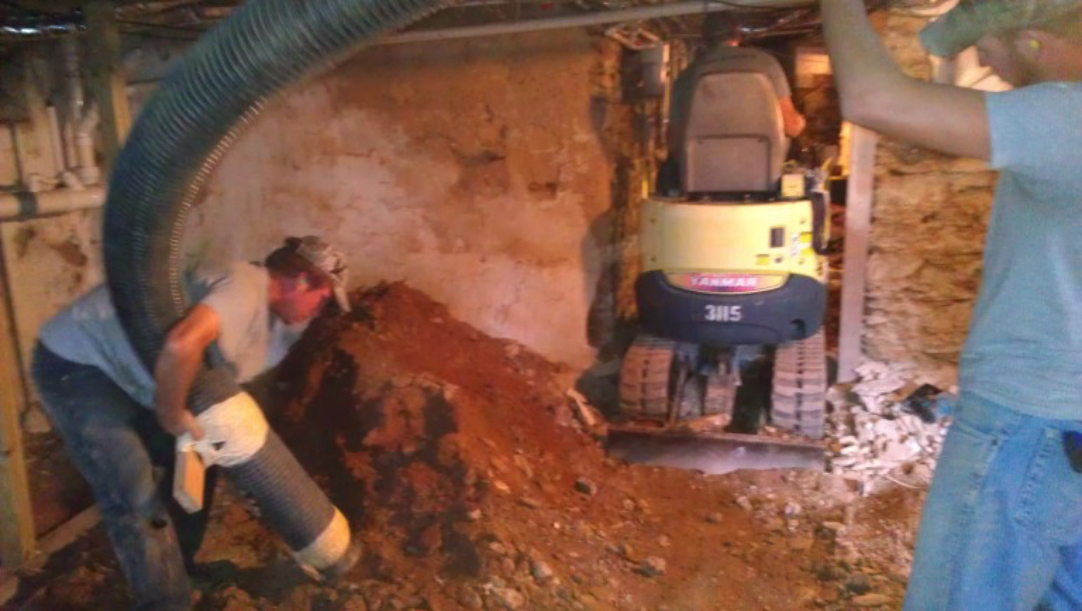
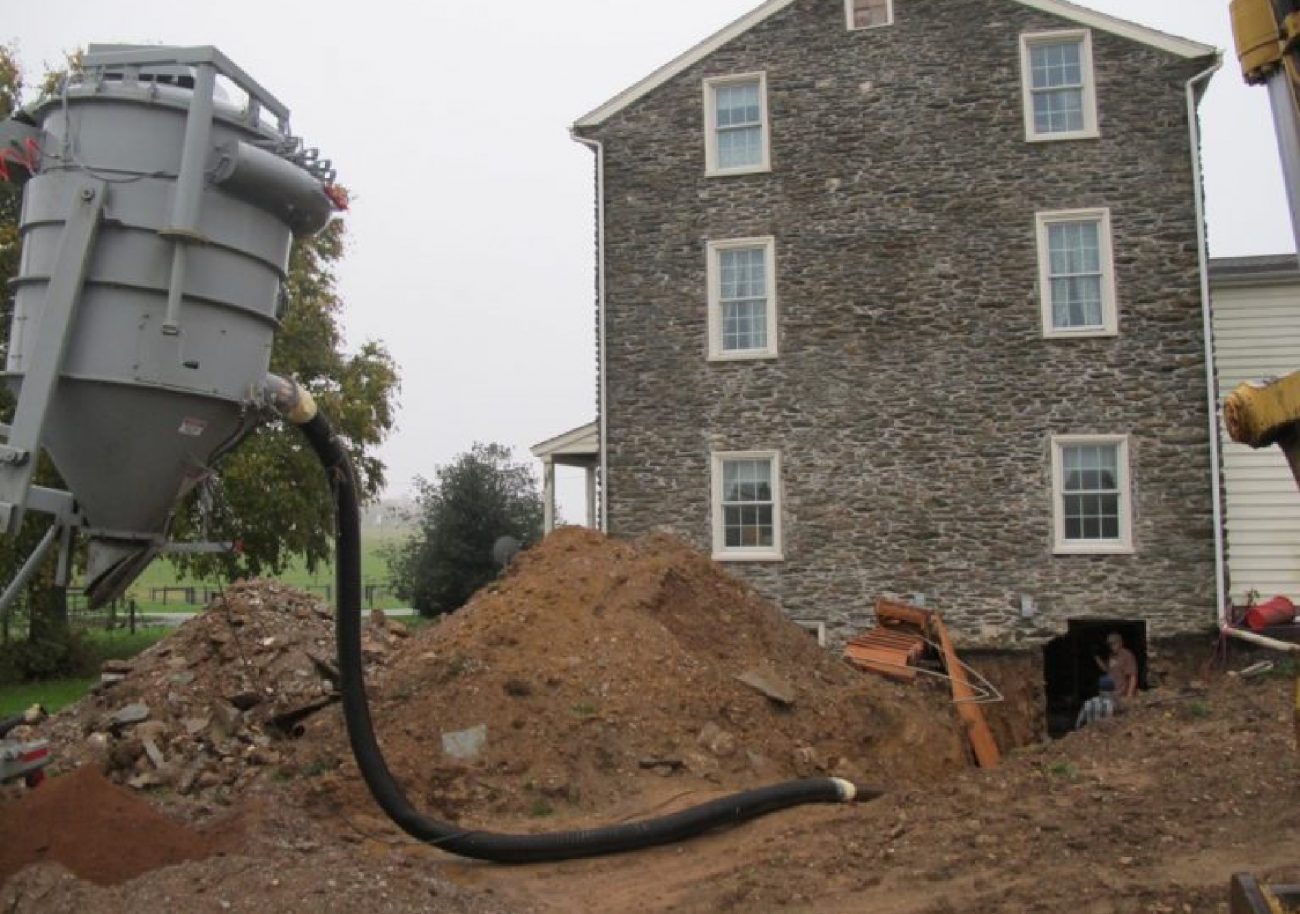
Previously after breaking up the subsoil in a basement, our workers would have to carry it out in buckets or shovel it to a conveyor belt: it is a lot of work and it takes a long time. This time our excavator rented a giant “Shop Vac” for the job and we removed about 1’ depth soil with a shop vac connected to a 8” diameter hose.
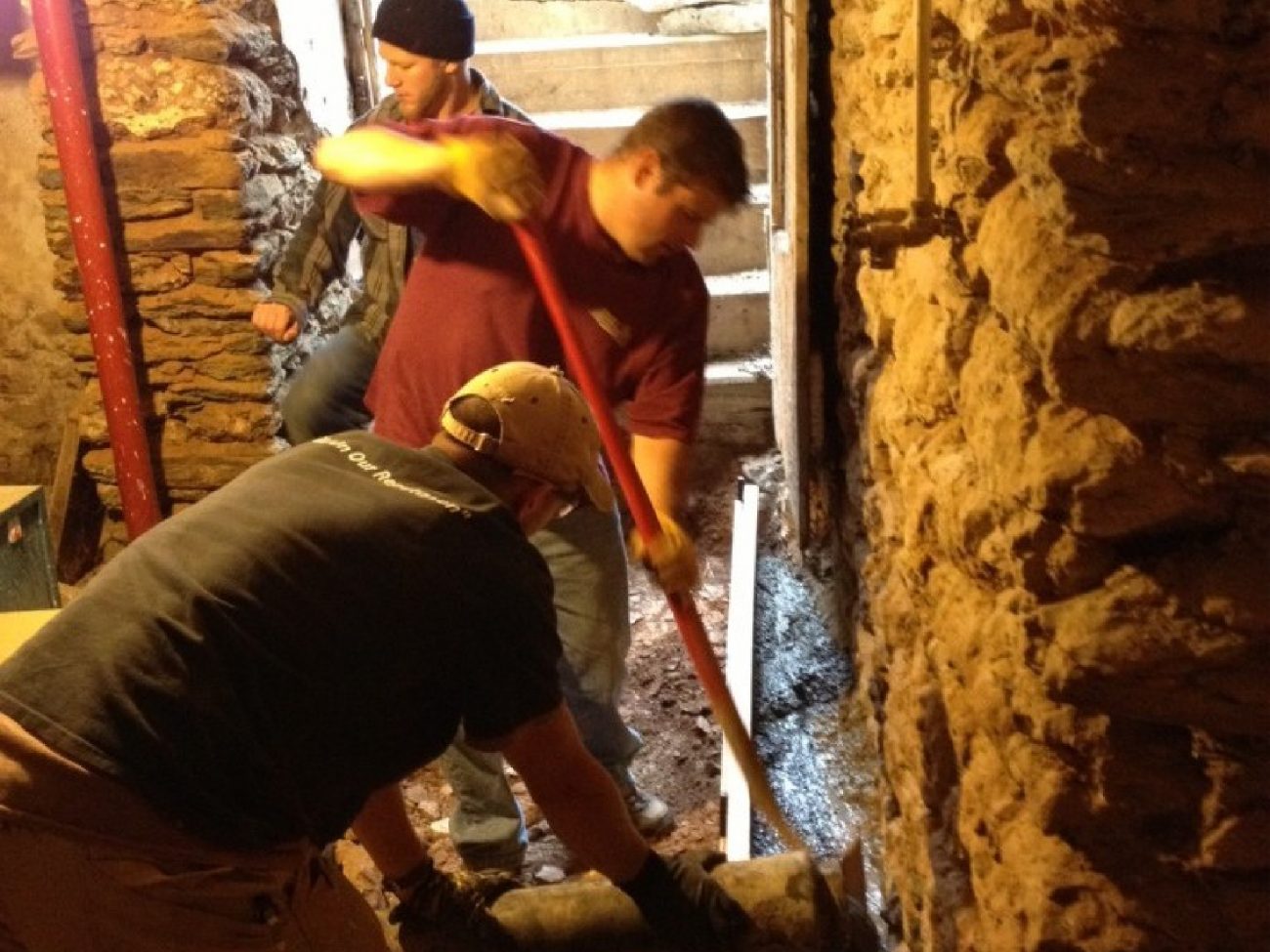
We had to pour a footer around the perimeter of the basement to stabilize the walls because we lowered the level of the floor to below where the wall ended.
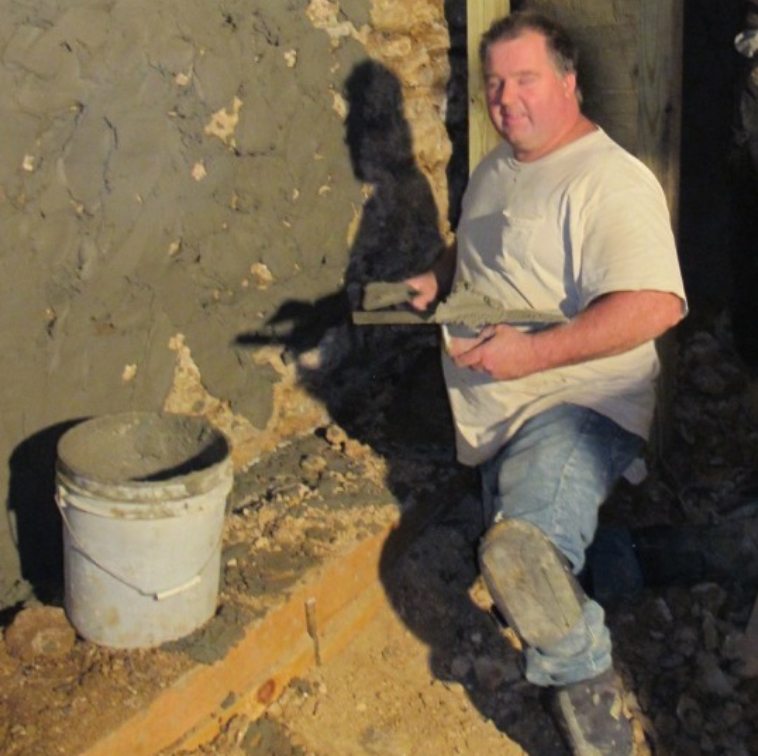
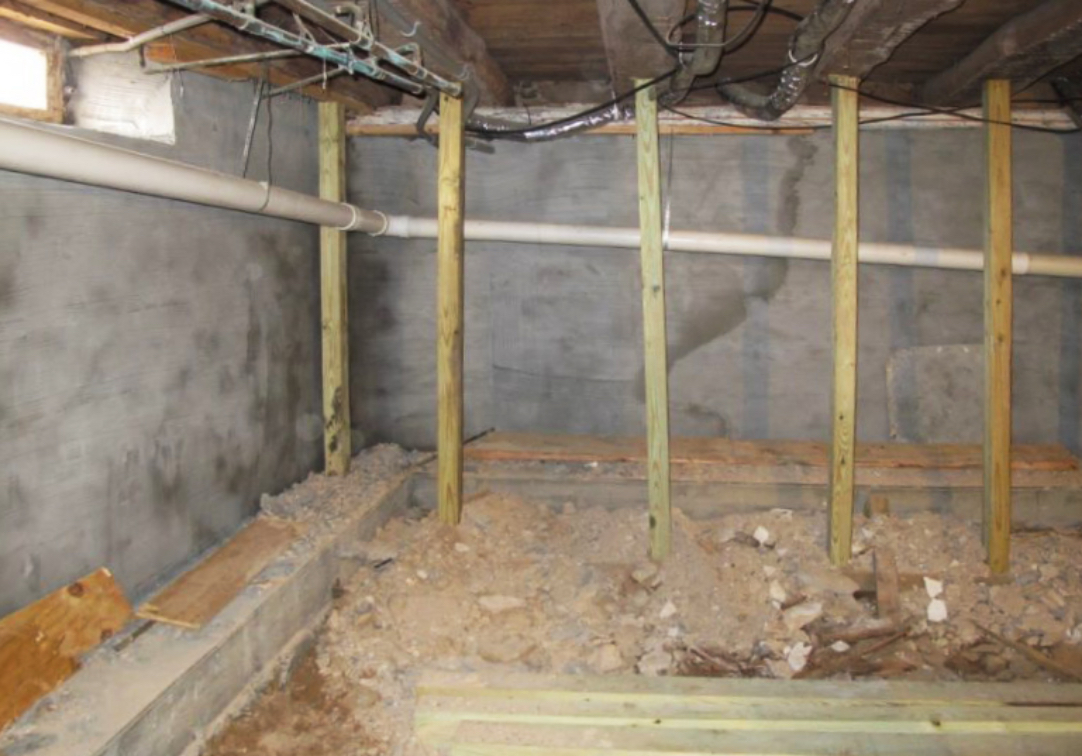
Next step was to make the walls more resistant to the moisture in the earth. We moved falling plaster from the walls and dug out the loose mortar. The next step of this process was to reinforce the base of the wall with a concrete footing. The masons added mortar between the stones and then a “scratch” coat before installing the finish coat of stucco with a water barrier added to the stucco mix: this coat is vapor and water resistant. After the stucco dried, we started placing the stones on the floor, as well as a plastic vapor barrier. The new concrete floor was poured on top of these stones.
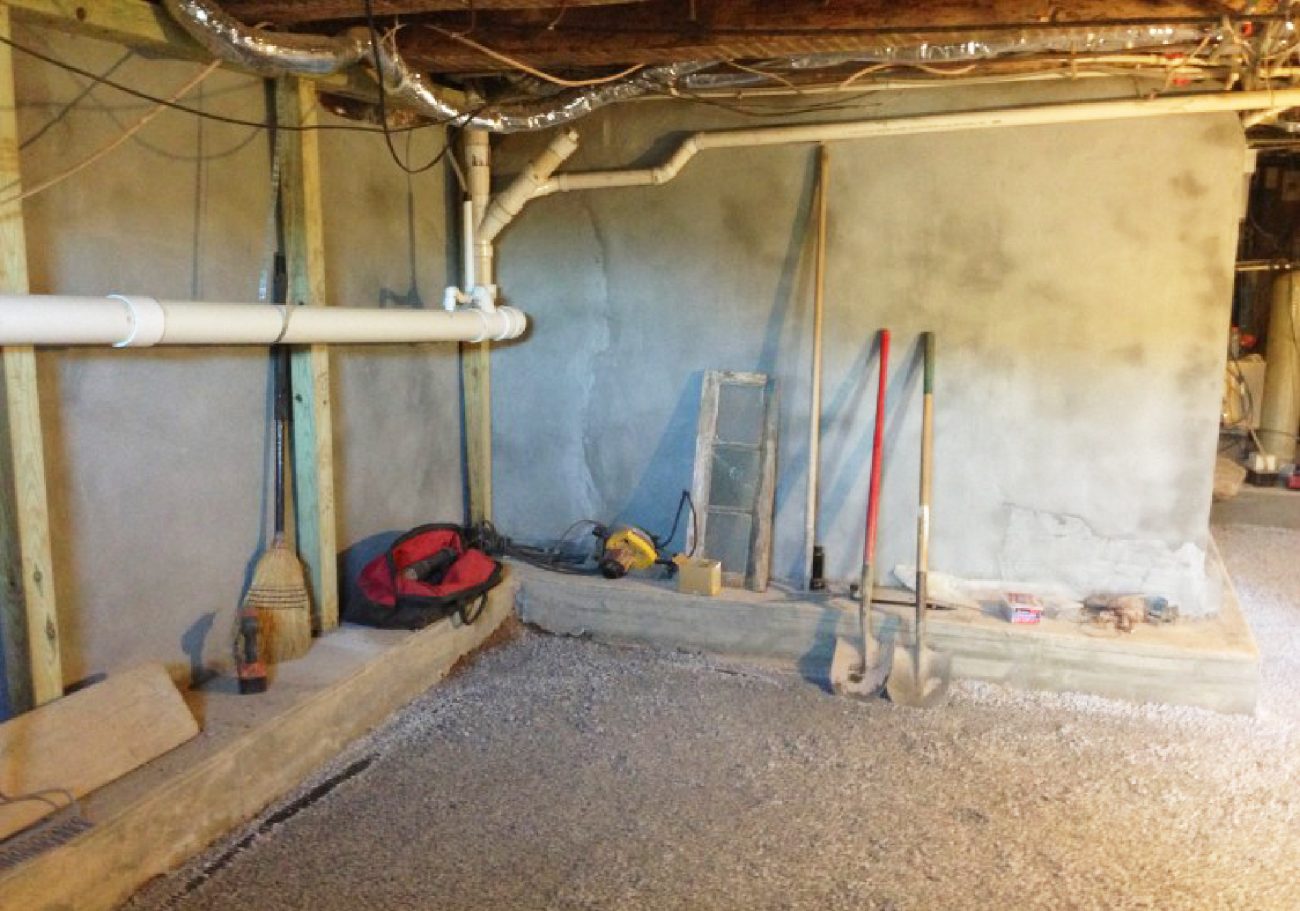
Now that the walls are complete and waterproof, it was time to arrange the mechanicals into an orderly, more approachable presentation. This new set-up makes it easier for anyone in the house to access all the necessary mechanicals if something were to happen.
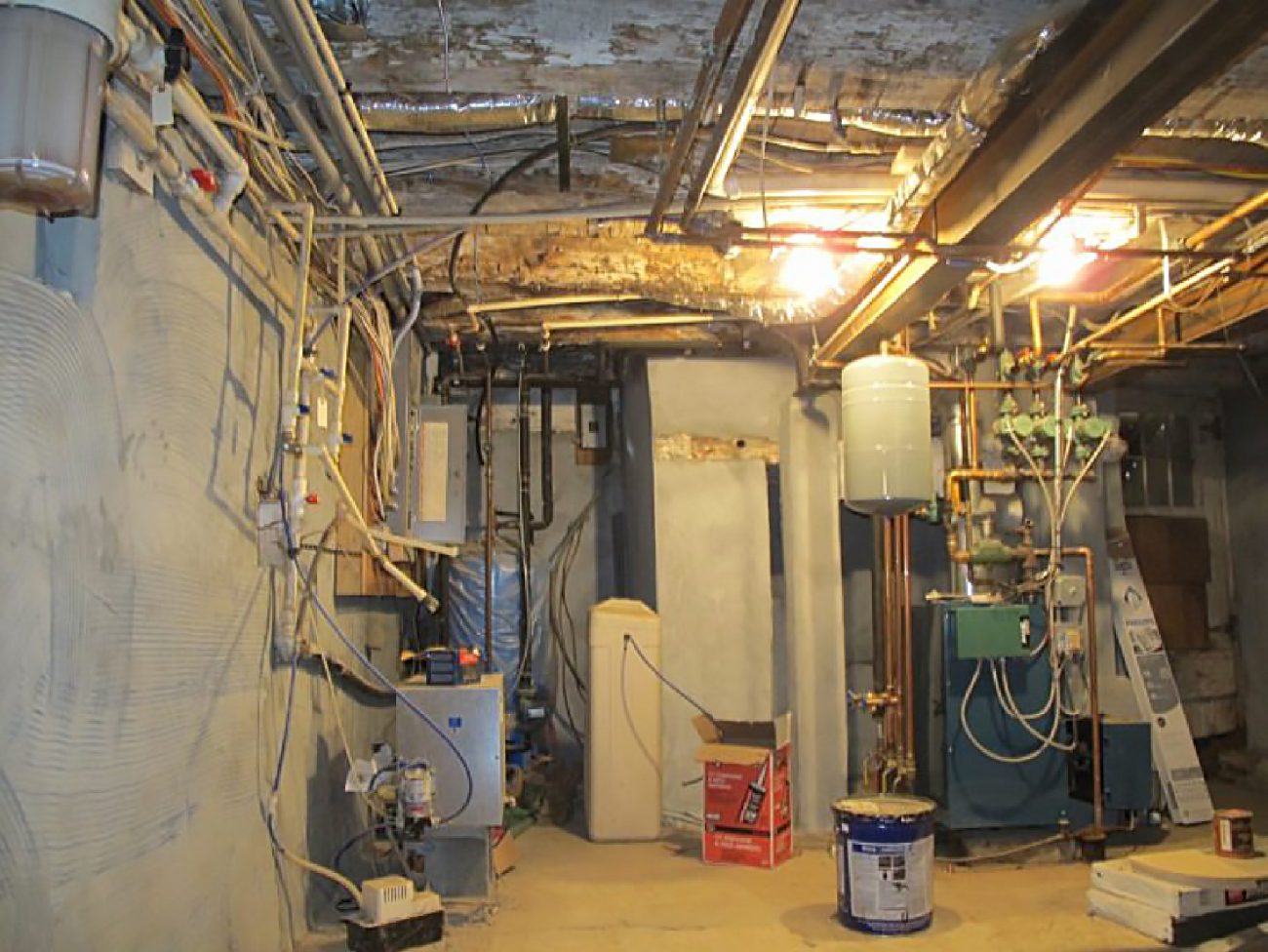
At the same time, we also wanted to recreate the old, step-down root cellar that was in the original basement.
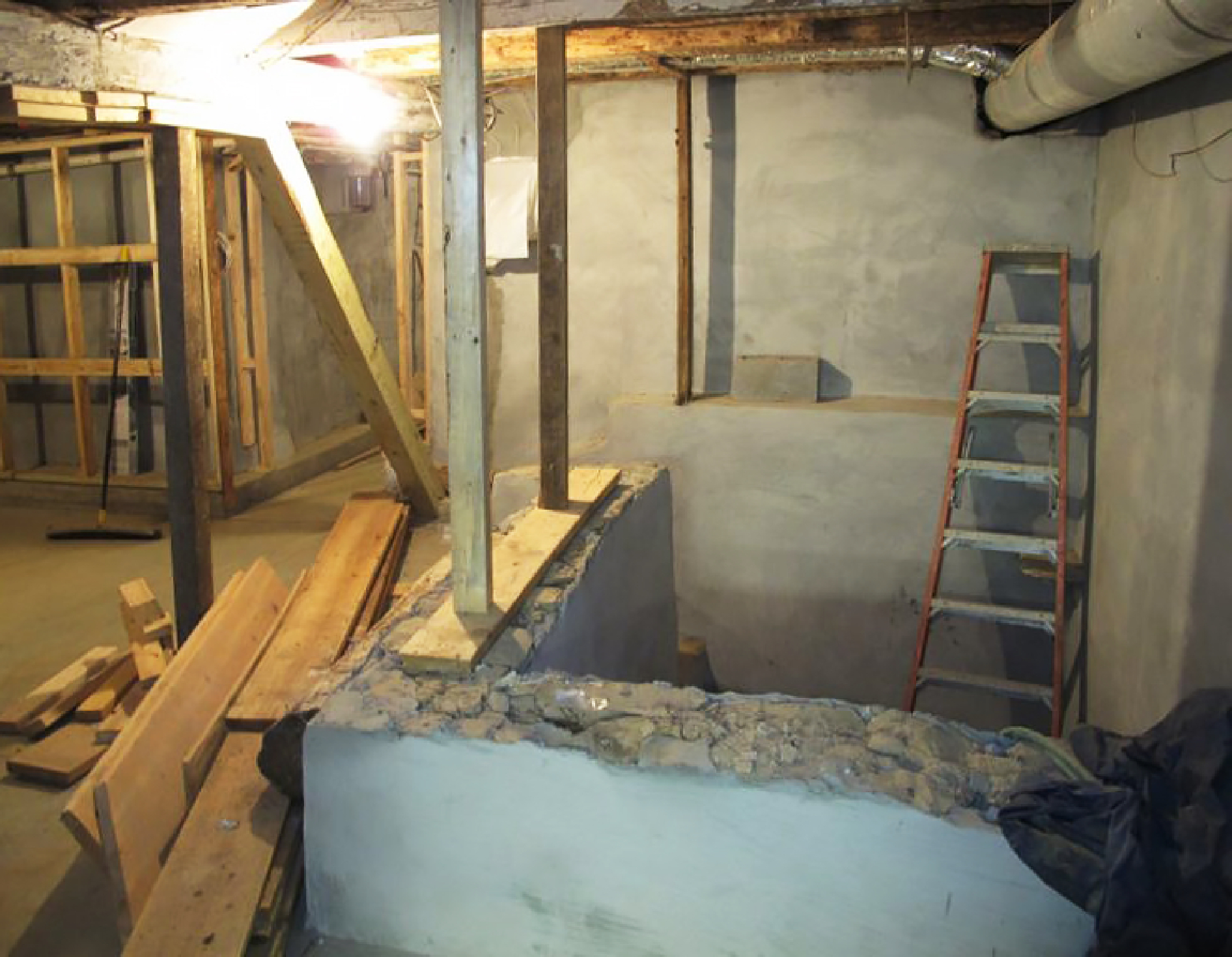
Remember what it looked like in the “before” photograph?
Gary added a special, hand-crafted detail to this engine room. He built a door out of leftover scraps of wood to replace the old, rotting one.
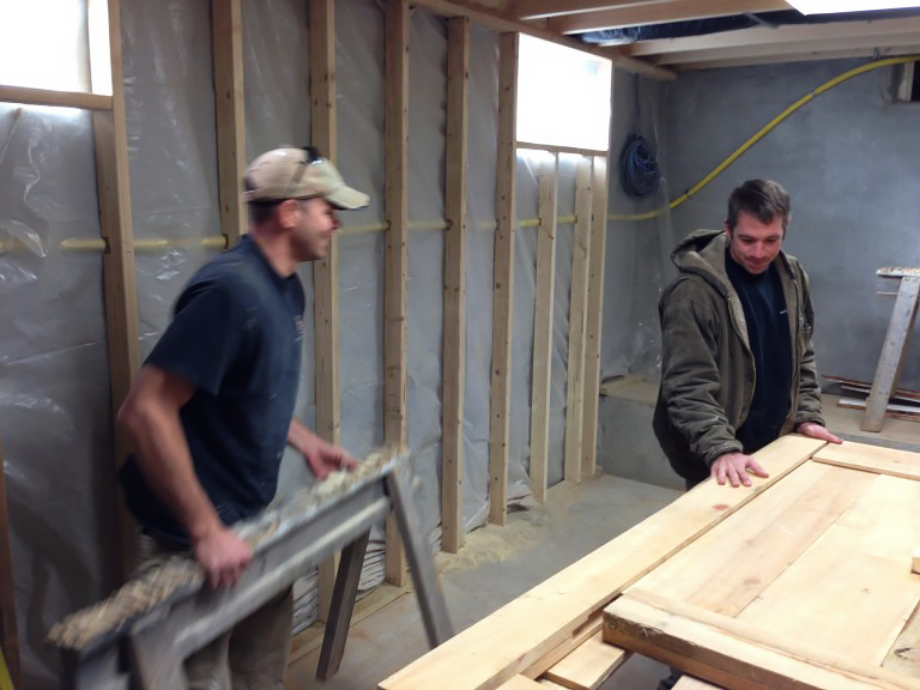
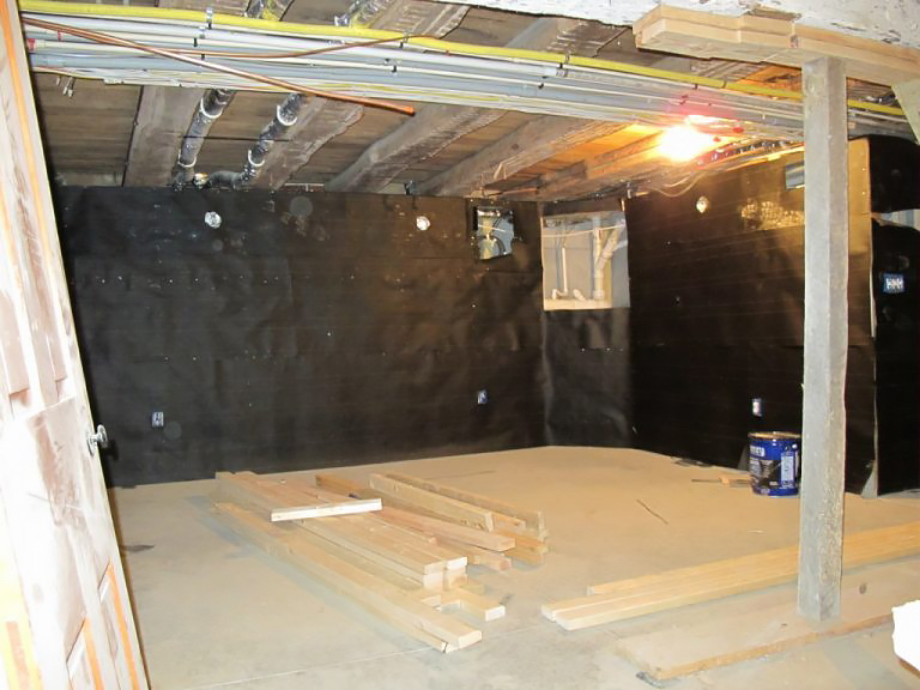
Now you can see the ductwork has been tied up and the walls were being prepped for the finishing touch: reclaimed barn wood planks that would complement the charm of this old farm house. The planks were also a great source of cover for the new plumbing work we installed.
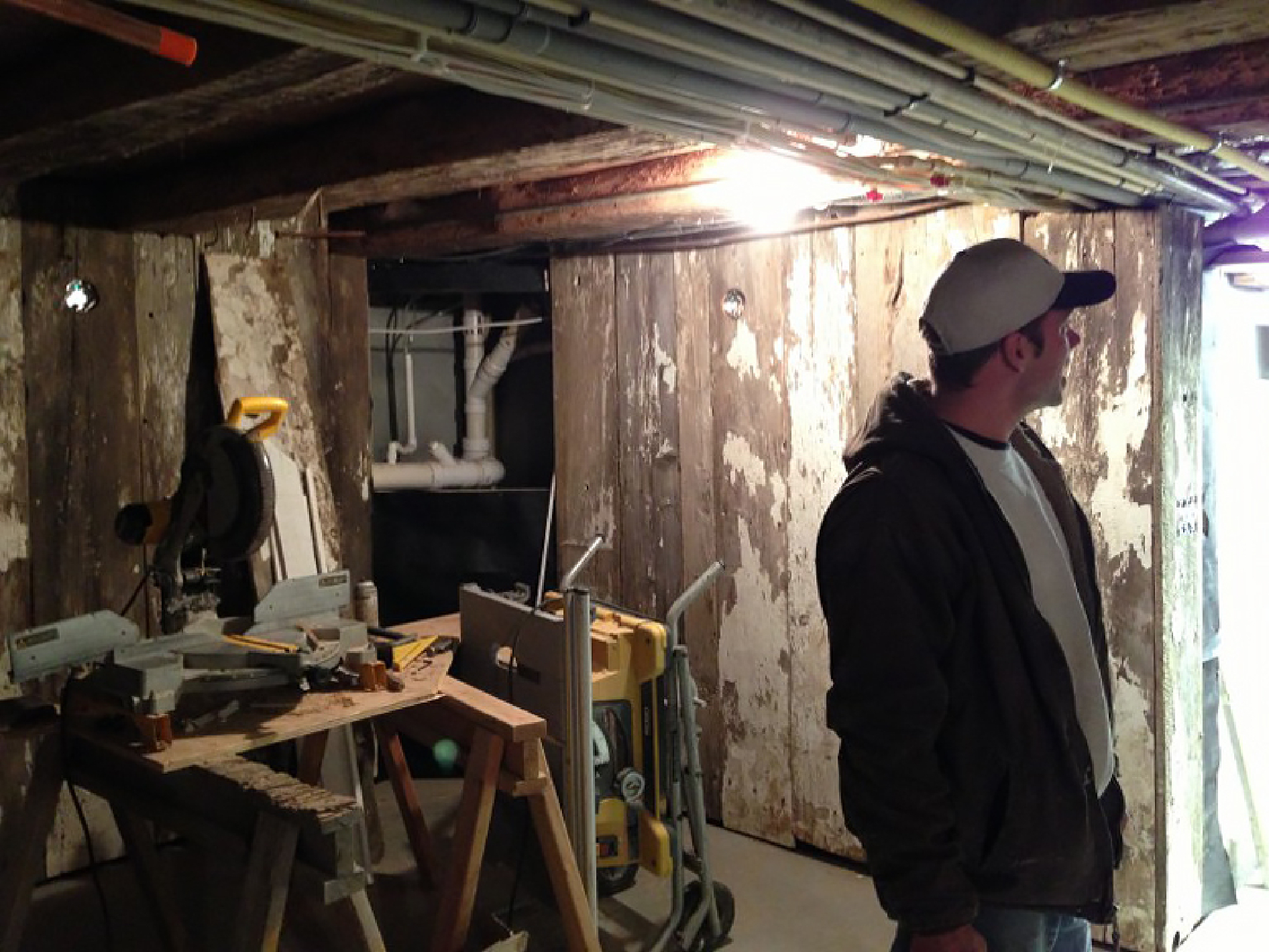
After all of the time and effort put into this neglected space, this is the final result:
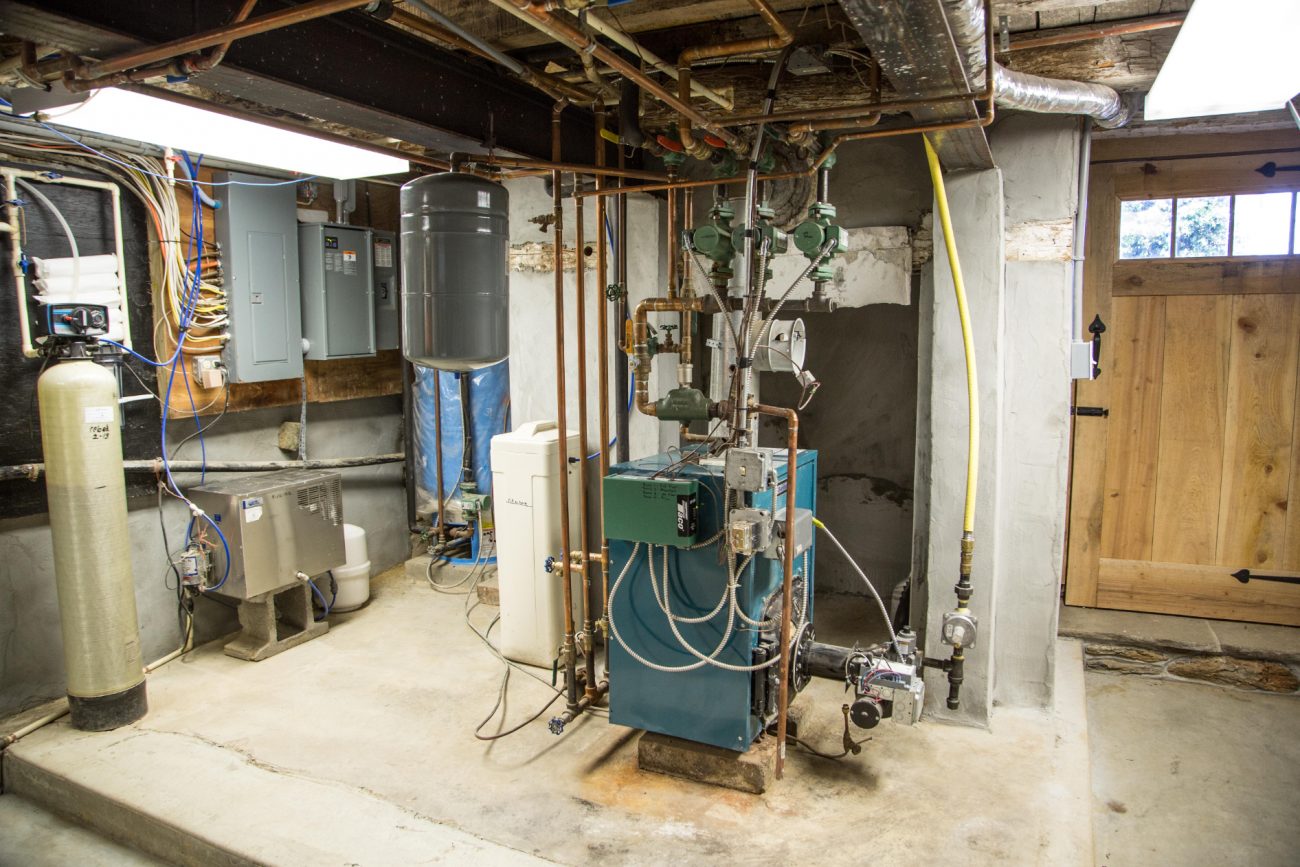
This mechanical area is now beautifully cleaned up. Check out that custom-built door in its new home!
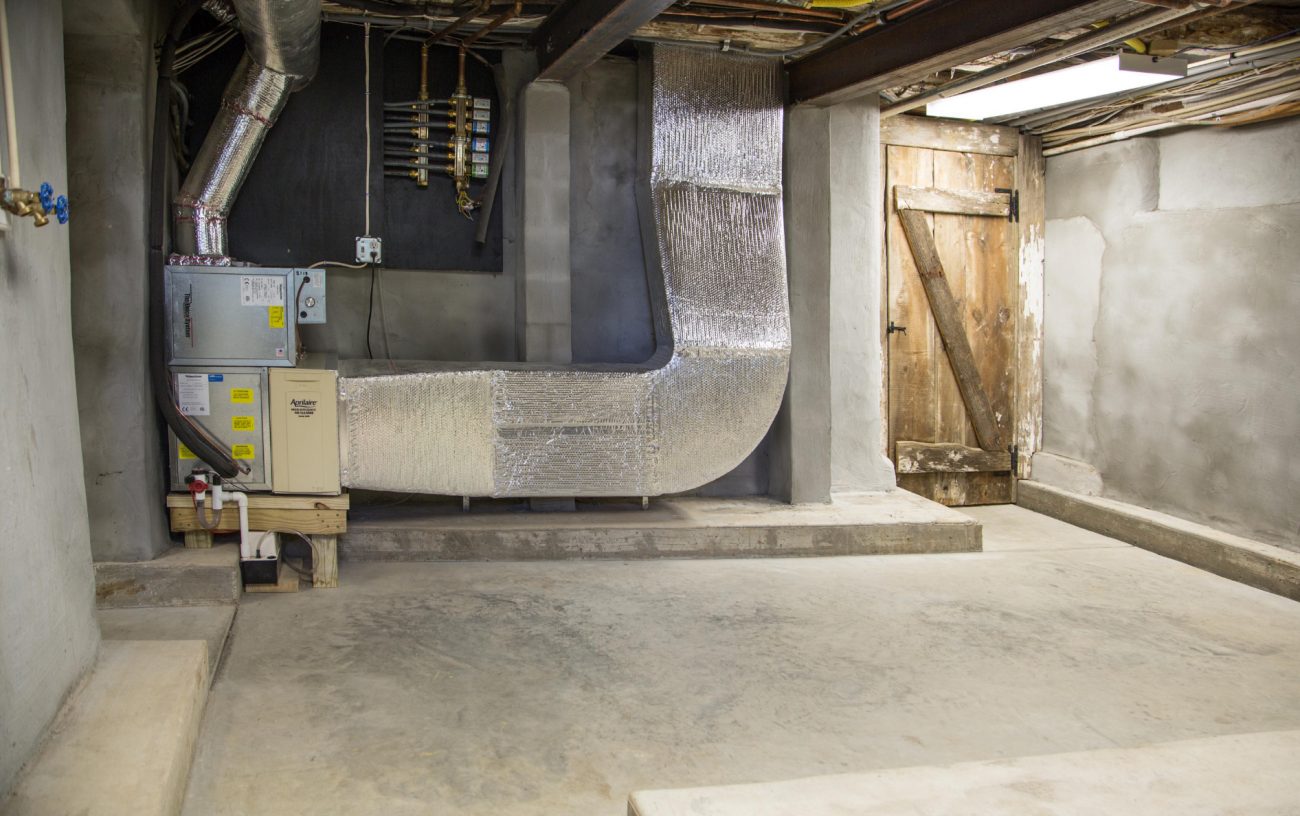
A space that was once dark, grungy and unapproachable is now clean , brightly lit and easily accessible.
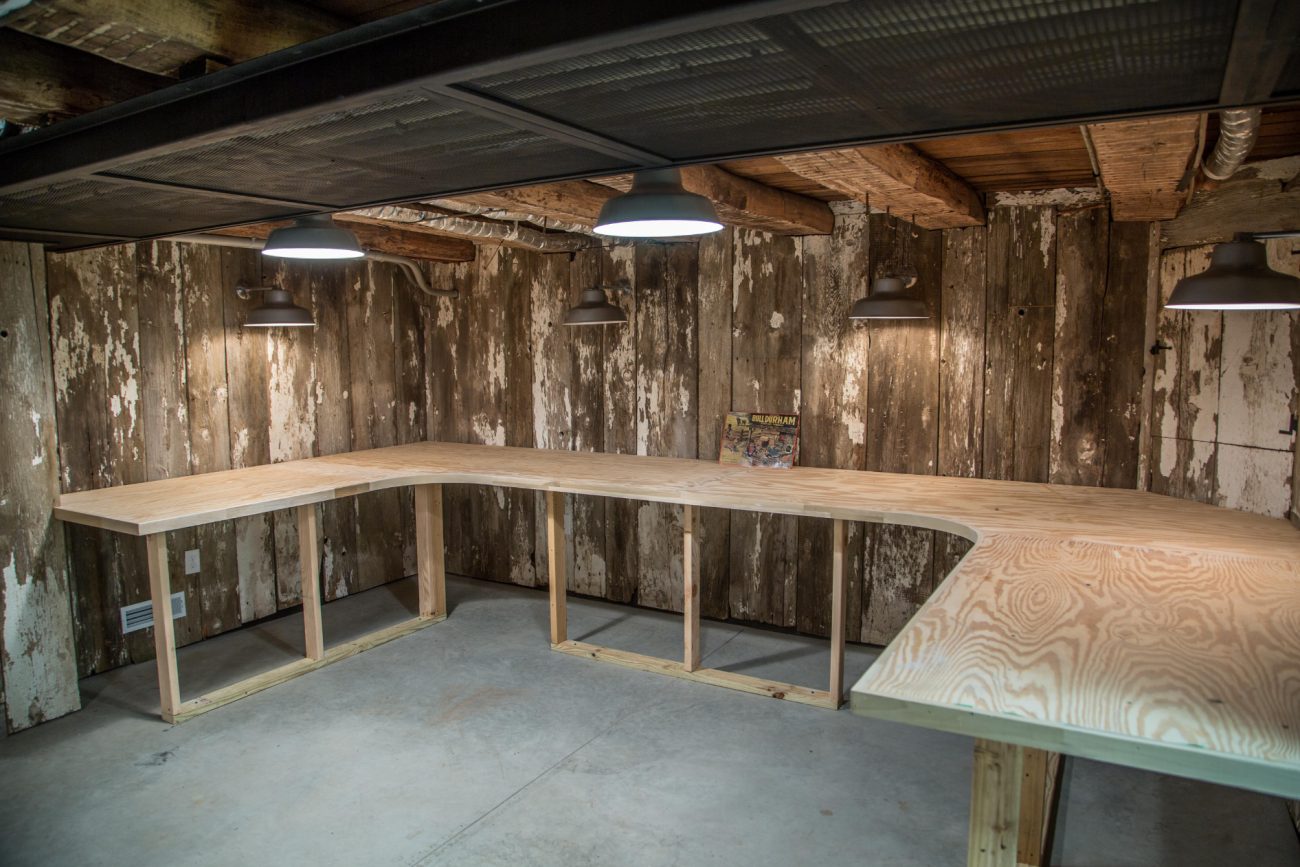
Before our work, the MacCauley family spent little to no time in this space. But now, this area is ready for their son’s model trains to race around their tracks.
On a ship, the engine room is kept pristine, organized and orderly. It is the heart of all function and without it working at its best, the ship will not either.
In a home, the general consensus may be that the kitchen is the heart and soul of a home, but for this home, the basement, which lacked a lot of heart and attention, is now a proud place of organization and function for this home. This basement will no longer be a constant source of worry and concern when the furnace repairmen arrives to inspect or if there is a heavy rain over a weekend. This engine room was built to last.
View Project
